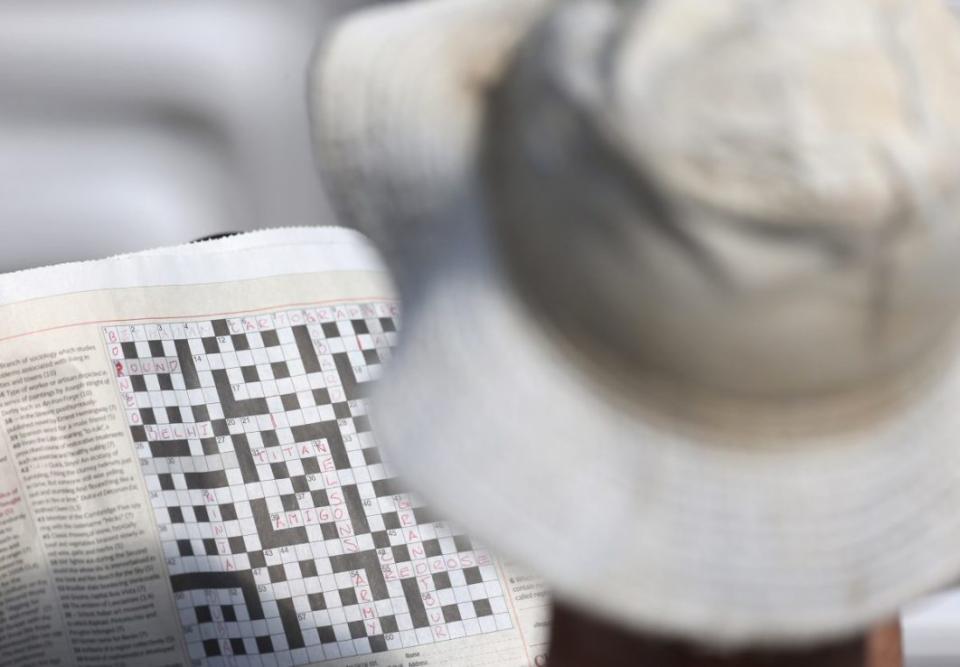Could word games be the future of networking? Linkedin thinks so

Linkedin’s gaming push has raised some eyebrows, but capitalising on Gen Z’s crossword craze is a smart move, writes Anna Moloney
New York, 1924: the height of the Roaring Twenties. War is over, the economy is booming and the champagne is free flowing. But amid the decadence and debauchery, there was another, less remembered sensation sweeping the city. I speak, of course, of the crossword.
Published for the first time in the New York World in 1913, the crossword had become a national fad by the mid 1920s. From crossword-themed musicals to puzzle-patterned stockings, America went gaga for the game. But not everyone approved and, indeed, one newspaper in particular raged against the craze.
“A sinful waste in the utterly futile finding of words,” seethed The New York Times. “This is not a game at all [and solvers] get nothing out of it except a primitive form of mental exercise,” the editorial, entitled “An Enslaved America”, read. “Crossword mania breaks up homes,” another headline raged amid a nation of puzzle-addled housewives. Its readers, The New York Times maintained, were above the “childish mentality” which marked that of a crossword puzzler and its hard-hitting news stories already provided more than enough to hold its erudite audience’s attention. It would not, I repeat not, be including puzzles in its offering.
Fast forward 100 years and it could be said The New York Times now feels a little differently. First caving in the aftermath of Pearl Harbour (when the newspaper determined some light diversion for its readers could be warranted), The New York Times crossword is now as famous as a puzzle can be.

A recent uptick in subscriber numbers to the publisher is credited largely to a boom in interest in its games offering, fuelled by the popularity of its daily puzzles: Wordle, Connections and, not least, the mini crossword. The publisher passed 10m subscribers in November, with over a tenth of those subscribed to the games alone. Among the rest, bundle deals (a large number brought through the The New York Times Games product) make up the bulk of subscribers, while The New York Times’s chief product officer Alex Hardiman reported that subscribers who engage with both the publisher’s news and games have the best long-term retention as customers. “The half joke that is repeated internally is that The New York Times is now a gaming company that also happens to offer news,” a staffer told Vanity Fair.
So it’s perhaps no surprise that others are looking to get in on the action, not least Linkedin, which this month added three daily puzzles onto the professional networking platform as part of its mission to “connect the world’s professionals to make them more productive and successful”. Whether tech bros playing daily word games is the answer to the country’s productivity crisis remains to be seen, but the move could prove to be smart business.
In social media land, after all, it’s eyeballs that are everything, so encouraging workers’ attention to stray to a few daily games (all of which can be played on a platform you don’t mind having up on your office screen) could well be a boon for engagement (and advertising revenues in turn). That puzzlers are among the most devoted of readers is certainly something we can attest to at City A.M. (there is nothing more sure to provoke a flood of complaints in the news inbox than a mistake in our crossword).
Linkedin’s foray into online games also lines up with the broader strategy of its owner Microsoft, whose $69bn acquisition of Call of Duty maker Activision Blizzard last year marked a bold bet on the gaming industry. And no wonder, valued at an estimated $249.6bn, the global gaming industry is now worth more than double that of the music and film industries combined – a statistic no doubt that’s been going around boardrooms recently as more and more untraditional players (Netflix and Youtube for example) try and take a bite.
Linkedin is also encouraging its new gamers to share their scores and “banter” with their colleagues after playing, in what seems to be a bid to replicate the online buzz which has formed around The New York Times puzzles, which now boast their own batch of dedicated Tiktok influencers and Twitter discourse.
Nick Lising-White, a behavioural analyst at Canvas8, told me while the move could frustrate some users by trying to artificially replicate the organic engagement that grew around Wordle, the decision taps into the known success of digital content businesses “gamifying engagement through features like ‘streaks’ [which] can have a powerful effect on consumers”. Indeed, like The New York Times, the games are designed to encourage habitual (or addictive) use. “Whether it’s prepping your mind on the commute in, taking a quick mental break between meetings, or unwinding after a long day” the games are made to “fit right into your work schedule,” the company promises. In other words, it’s hoping to programme Linkedin puzzling into your morning scroll muscle memory.
And it could very well work. Linkedin’s new games are, I’m sorry to tell you, quite fun. Like The New York Times’ games, Linkedin’s puzzles have been designed to be easy enough to be quick but hard enough to make you feel good about yourself, while their limited nature (once you’ve solved them you have to wait until the next day for a new batch) relieves them of the guilt many of us have developed around social media scrolling. And while the thought of competing on a company leaderboard may be enough to cringe out the cynics, a quick sweep of the rosy attitudes of Linkedin’s “top voices” should leave few in doubt that there is at least one type of audience ready and waiting to play them (and, of course, tell you what it teaches them about B2B sales).

 Yahoo Finance
Yahoo Finance 